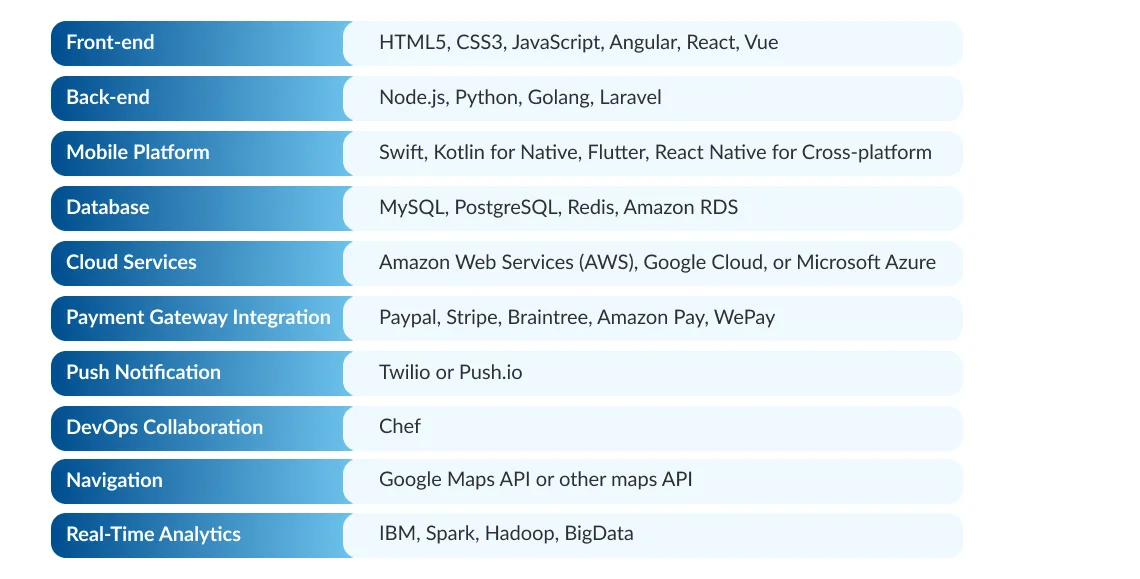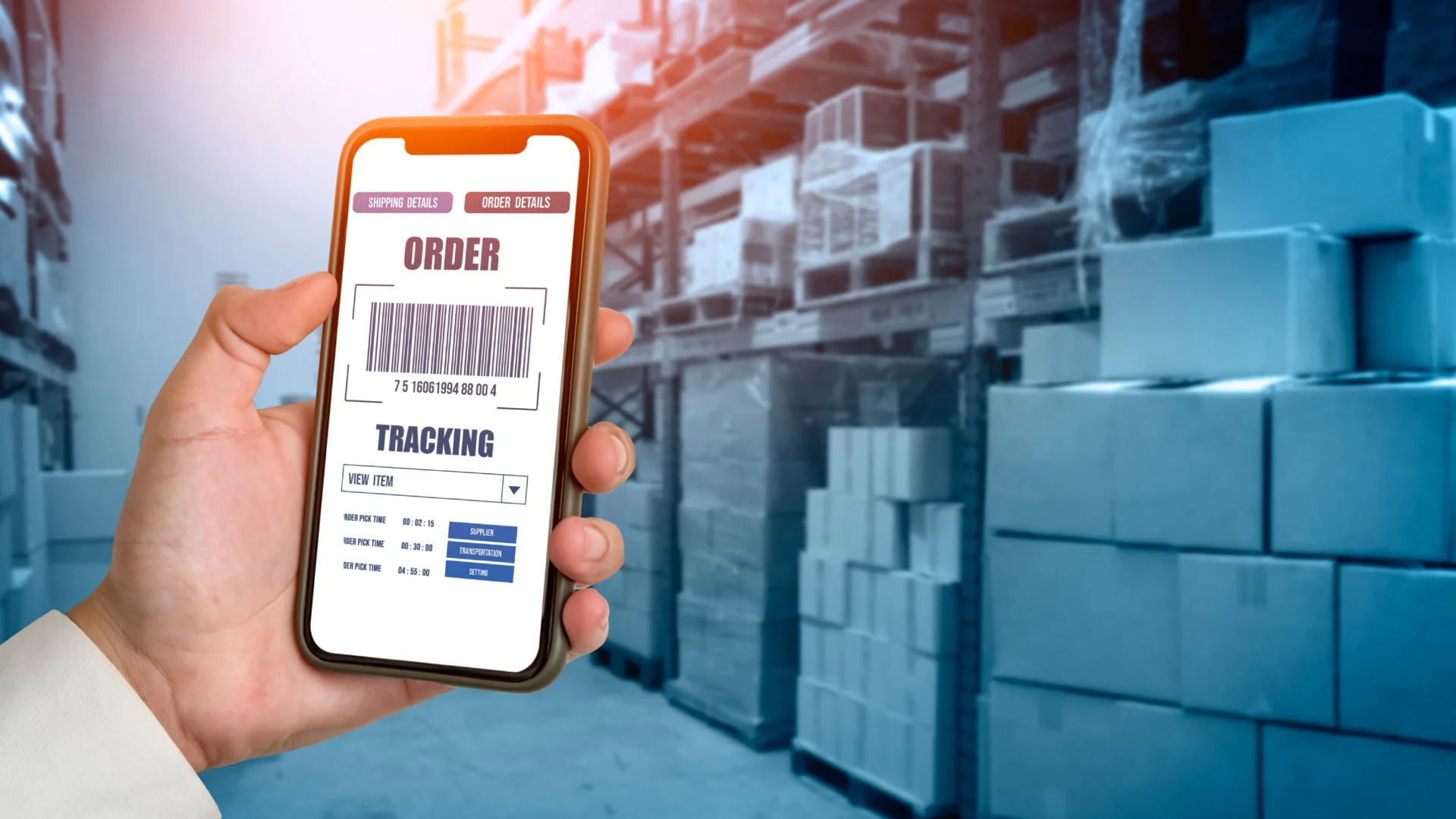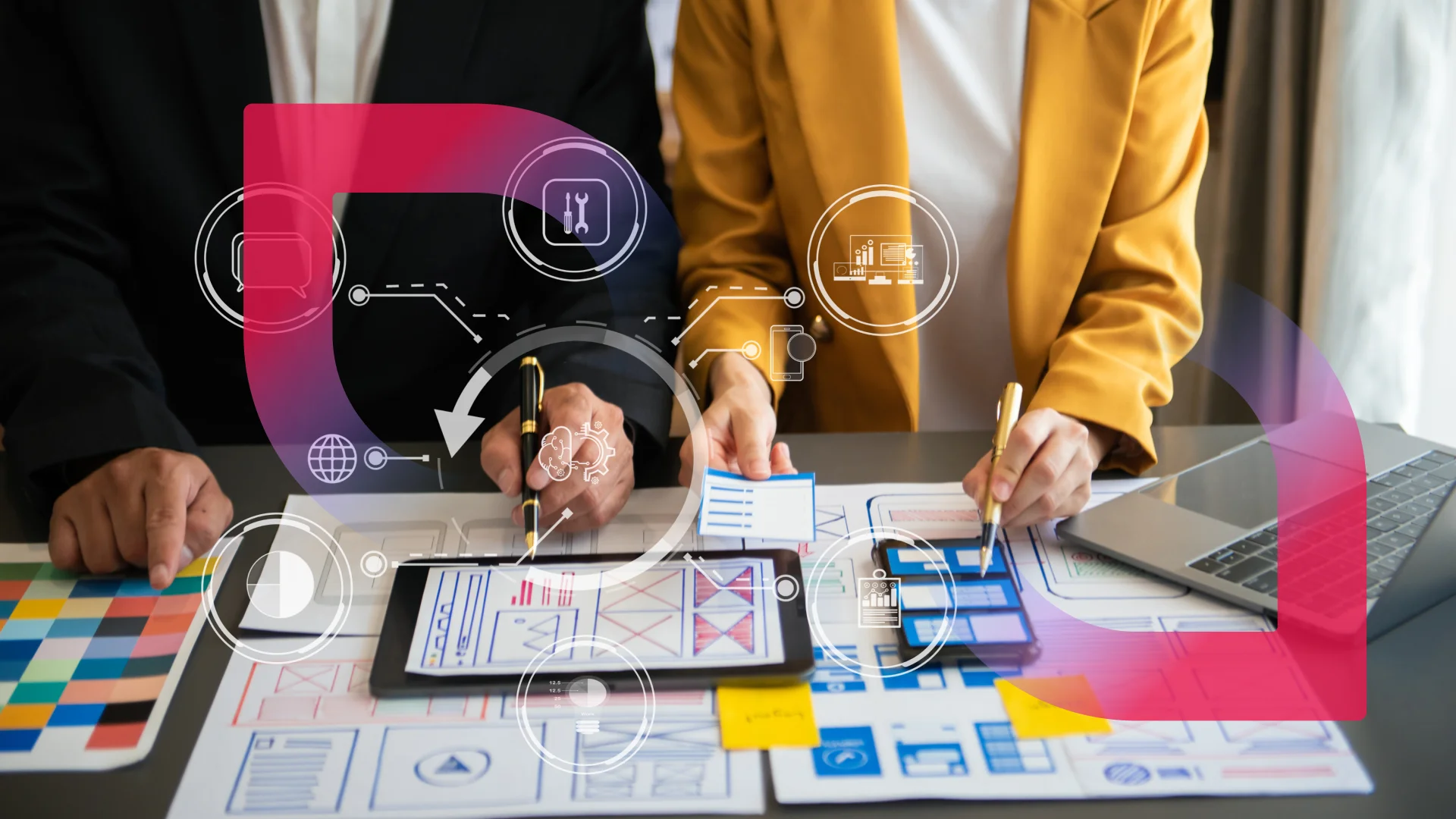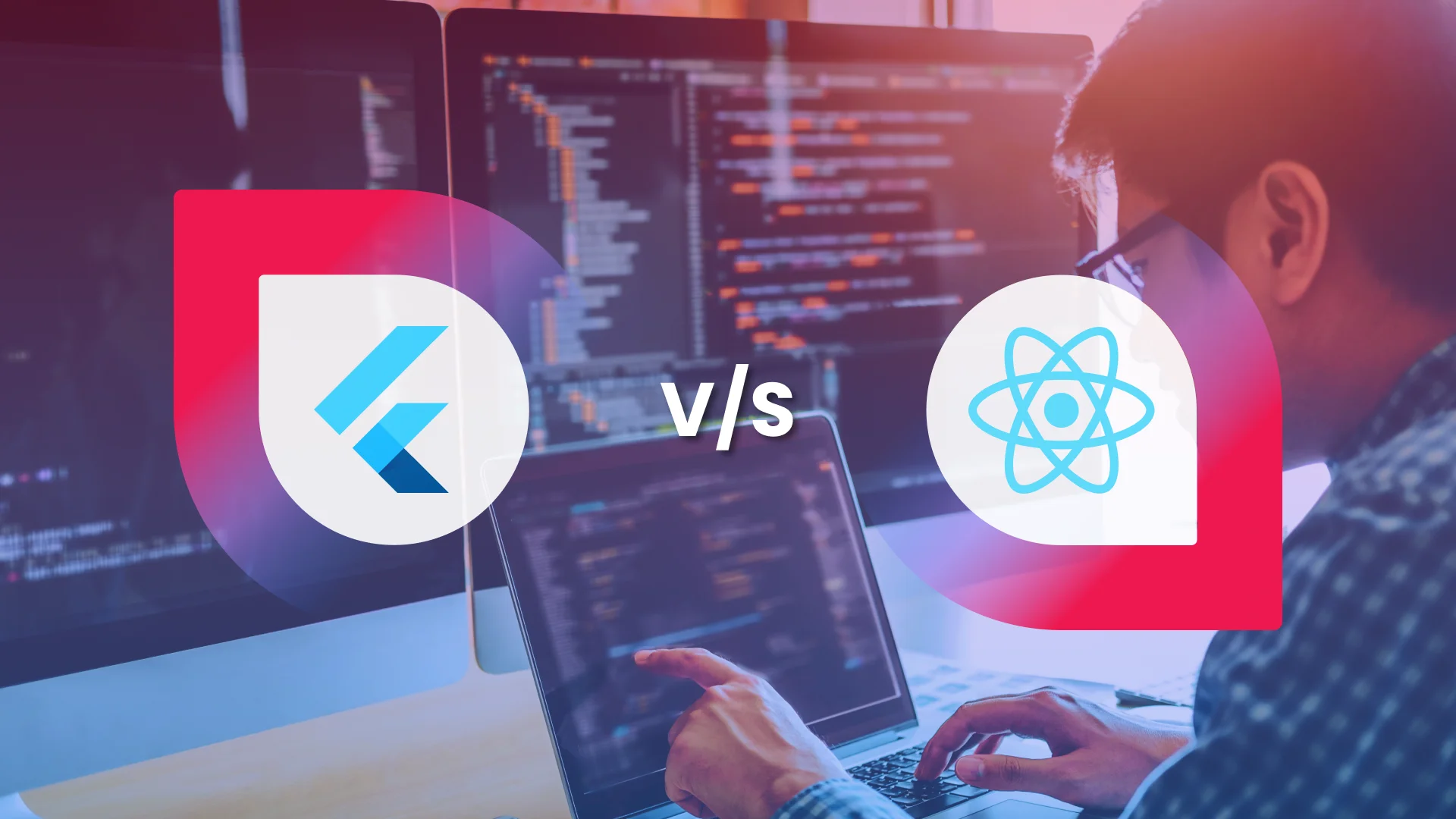How to Develop a Logistics App: A Comprehensive Guide
- Mobile
- December 21, 2023
Whether it is truck transportation, supply chain management, international transportation, or more, these subsets of the logistics industry struggle with a lack of supply chain visibility, data management, route optimization, and more.
The ultimate solution to all these challenges is Logistics software development!
Adopting technology enables businesses to avail the benefits of the latest tech like AI, blockchain, IoT, big data, and more. However, when implementing digital solutions like these, the business owners are often reluctant and intimidated, anticipating its impact on their business.
To clear your second thoughts, here are some insights into what the logistics app development future holds.
What is the Future of Logistics App Development?
With these industries’ futures being reshaped with innovation and the latest tech, it is all set to have promising growth. The future of this industry can be well represented with all the expected statistics and insights.
- The worth of the logistics industry fueling international trade will exceed 13.7 billion euros by 2027 according to statistics and facts on transportation and logistics by Statista.
- The E-Commerce Market size is estimated to reach USD 16.24 trillion by 2028, growing at a compound annual growth rate(CAGR) of 15.80% during the forecast period (2023-2028), as mentioned in the e-commerce market analysis by Mordor Intelligence.
- The logistics industry is expected to exhibit a CAGR of 6.80%, projecting a growth of USD 16,01,196.16 million by 2030, according to global logistics overview by Market Research Future.
- According to Gartner predictions, by 2023, 50% of global product-centric enterprises will have invested in real-time transportation visibility platforms.
How Does a Logistic App Work?
Basically, a logistics app serves as a comprehensive solution that optimizes the movement of goods, enhances visibility across the supply chain, and facilitates effective communication among stakeholders.
At its core, the logistics app works by integrating various components of the logistics chain, transforming manual tasks into efficient, automated operations. The process typically begins with order placement, where the app captures information about goods to be transported. This data then flows seamlessly through the logistics network, encompassing tasks like inventory management, route optimization, shipment tracking, and more.
In essence, a logistics app acts as a digital command center, integrating these components to optimize the movement of goods from the starting point to the ending point.
To understand what impact the adoption of the latest technology has on this industry, explore how technology has transformed the Logistics industry?
Different Types Of Logistics Apps
From real-time tracking to inventory management and more, logistics apps have evolved to address specific challenges in the transportation and logistics industry. Let us explore various types of logistics apps, each tailored to meet distinct requirements and contribute to the efficiency and effectiveness of the entire supply chain ecosystem.
On-demand Logistics Applications
Unlike the unconventional logistics application, which heavily relied on the manual process, had inefficient resource management, and most of all was chaotic when offering customers any impromptu last-mile deliveries or urgent shipments.
On-demand logistics apps are the best bet enabling businesses to cater to the dynamic needs of businesses and consumers alike. Whether it’s parcel delivery, ride-sharing for goods, or instant courier services, on-demand logistics apps provide a responsive and efficient approach to offering immediate and flexible logistics solutions.
Fleet Management Applications
Fleets are an indispensable asset for businesses, especially transportation companies; it becomes inevitable for business owners to have real-time insights into every aspect related to their fleet. From instantaneous vehicle locations to fuel consumption, maintenance schedules, current vehicle condition, maintenance histories, vehicle’s operating cost, maximum payload, and more.
Getting this information handy would enable the logistics business owners to maximize productivity, reduce costs, and ensure smooth operations by ensuring timely maintenance, optimizing routes, efficient delivery planning, and more.
Warehouse and Inventory Management Applications
It can be considered a subset of a real-time tracking app as it is designed to simplify the complexities of tracking, organizing, and managing shipments and inventory within a supply chain. From tracking stock levels to orchestrating seamless warehouse operations, these applications often feature real-time tracking, order processing, and inventory monitoring capabilities.
With features like real-time tracking, barcode scanning, and automated order fulfillment, these applications simplify the complexities of handling large inventories.
Supply Chain Management Software
Supply chain management software ensures a seamless flow of information across every link in the supply chain enabling business owners to oversee and optimize the entire supply chain, from procurement to distribution. Some of the crucial features of these apps are inventory tracking, order processing, real-time analytics, and more.
These applications are tailored to meet the specific needs of businesses, enhancing visibility, optimizing processes, and ultimately contributing to the overall efficiency of logistics operations.
Real-Time Tracking Apps
If your business wants the user to get instantaneous and continuous updates on the location, status, and movement of goods in transit, then a real-time tracking app is the most suitable type of logistics app. This app uses the power of GPS technology and other advanced systems to offer precise, up-to-the-minute information.
From monitoring the journey of shipments to ensuring timely deliveries, these apps bring transparency, accuracy, and speed to the logistics process. Amongst others, it also enables the drivers to share their location, current delivery status, and so on.
Delivery Apps
From optimizing and streamlining the delivery process to ensuring goods reach their destinations efficiently, delivery apps are all that businesses need with their primary offering as shipment delivery.
Unlike other types of logistics apps that focus on broader supply chain management or inventory tracking, delivery apps are laser-focused on the crucial last-mile delivery(on-demand deliveries) apart from the scheduled ones. The additional functionalities this app includes are real-time tracking and payment processing for additional user convenience.
What Are the Main Challenges in Logistics App Development?
Apart from the challenges that the logistics business owners face regarding their operation fuelled by the unconventional systems, there are some development challenges too that their development partner may face. Here are some major challenges these businesses may encounter during the app development process:
Data security and restrictions
With developing a logistics app, there comes the data(sensitive user information) that the business owners require to provide an engaging user experience in the logistics app. The biggest challenge that the logistic app development company faces because of this data is its protection from cybercriminals/hackers.
Whereas in some locations/countries, there are specific restrictions in fetching some data like GPS data and more. This would only add to the development complexities as the development solution needs to be tailored to ensure it runs smoothly regardless of such geographical restrictions.
Choosing the right feature set
You do not want to end up developing an app that is already offered by your competitors or that is not needed by your target audience. Offering features that only address the industry needs and streamline operational efficiency but are offering valuable unique selling points (USPs).
The best approach to overcome this challenge is by developing a minimum viable product(MVP) that comprises minimum yet valuable features. And then build upon your MVP based on user recommendations and feedback along with your defined set of features based on market research.
Picking up the right tech stack
The best tech stack gives your custom logistics software stability, high performance, scalability, and more. From ensuring that the chosen tech stack aligns with the creative vision to potential constraints, and supports the app’s architectural requirements, adaptability, and more. It also considers factors like development speed, community support, and the ability to accommodate future enhancements.

Why is Logistics App Development Necessary for Transportation Businesses?
Having a logistics app is not just a technological upgrade; it’s a transformative software that will redefine the way your transportation and logistics services are delivered and experienced. As technology evolves, a well-tailored logistics app becomes instrumental in business growth.
The necessity of having one arises from the growing demand for streamlined operations, improved efficiency, and enhanced customer experiences. Here are some of the prominent benefits your business will avail of custom logistics software:
- Real-time tracking and visibility
- Seamless coordination
- Data analytics and insights
- Supply chain optimization
- Less paper more automation
- Reduced cost and energy
- Quick and accurate processing
- Efficient fleet management
- Effective warehouse management
- Regulatory compliance
- Online booking
- Improved productivity
What Are the Core Features of a Logistics App?
Not just operational efficiency but features are the backbone of user satisfaction in a logistics app. The emphasis on feature-rich functionality is at the core of transforming a logistics app from mere software to a strategic asset that propels businesses forward in the competitive logistics landscape.
From basic features like registration/sign-in to advanced features like data analytics and more, each of these features plays a pivotal role in defining the user experience and efficiency of your logistics operations.
Here are some essential features segregated by various stakeholder panels:
User App Panel Features
- Order management
- Search nearby vehicles
- Choose vehicle
- Tracking
- Real-time alerts and notifications
- Multiple payment options
- Ratings and reviews
Driver/Dispatcher Panel Features
- Dashboard
- Profile management
- Consignment/shipment delivery details
- Nearby facilities(mechanical support and fuel stations)
- Pre-planned and best route
- Real-time GPS tracking
- Data analytics
Admin Panel Features
- Dashboard
- Vehicle management and maintenance
- Manage fuel & vehicle consumption
- Driver management
- Transaction management
- Reports and analytics
- Trip log reports
Advanced Features
- Multilingual support
- Offline support
- In-app chat and call
- ePOD(electronic proof of delivery)
- Driver Safety
- Cloud Storage
For better insights into these features, check out our blog: Key Features Every Logistics App Should Have.
Steps to Develop a Logistics App
Developing a custom logistics app is a tedious task involving an intricate development process from ideation to conceptualizing the idea and designing, developing, deploying, and maintaining the software solution post-deployment.
Here is a detailed development process that the developers can take into consideration when building a logistics app:
Define Your Unique Selling Proposition (USP)
A value-driven service is indispensable to gaining trust among customers. It is only possible when the logistics business has realized what service they want to offer their stakeholder or user personas. Defining objectives enables businesses to brainstorm and come up with user-oriented USPs that would provide value service to their end-user when using their logistics app.
Begin with selecting the type of logistics app that fits best for your logistics app. Specify the functionalities and features you envision for your logistics app, ensuring that every step aligns with your ultimate goals. Upon doing that, it is time to gain competitive intelligence to ensure that you are aware of what it would take to stay ahead of the competition.
Hire a Logistics App Development Company
Now that you have made a smart move by opting to have a logistics app for your business, it is time for the next smart move, hiring a logistics app development firm. These specialized firms bring a wealth of expertise to the table, guiding you through the process of creating a top-notch logistics app.
From conceptualization to deployment, their dedicated teams or app developers for hire would work closely with you to understand your unique requirements and deliver a tailored solution.
Building the Technology Foundation
This would build the backbone of your app, detailing the technology requirements and infrastructure considerations that will ensure the seamless performance, scalability, and flexibility of your app. From choosing the right programming languages to crafting a robust server architecture, this section sets the stage for a successful logistics app development.
Here is what an ideal tech stack of a logistics app would look like:

Once you have the tech stack defined, it’s time to work on the aesthetics of your logistics app.
Creating Intuitive Interfaces
Just seamless functionality would not suffice the requirement of an aesthetically appealing logistics app! From easy navigation to engaging appearance, how it feels when used, how it looks, and more, designing the UI/UX comprises addressing the visual factors of the logistics software.
The UI/UX designers for hire have to consider every design detail from intuitive navigation menus to clear information hierarchy, every element contributes to the efficiency and user engagement of the logistics app.
Developing Core Features and Functionality
Once you have every prerequisite aspect of logistic app development, it is time to get to coding those features and functionalities! One of the most cost and cost-effective approaches to begin the development process is developing the MVP.
You can hire a team of skilled developers to simultaneously work on each panel (user, driver/dispatcher, and admin) to speed up the development process reducing the time to market.
Quality Assurance
Each build of the logistics app development has to go through a careful examination by the hired quality assurance engineers to check for any bugs or glitches in the performance, security, or functioning of the app.
The aim is to guarantee that every facet of the app, from user interfaces to backend functionalities, operates smoothly and efficiently ensuring that the logistics app meets the highest standards before it reaches the end-users.
Deployment and Maintenance
It is time for the potential users to have a hands-on MVP. Whether it is an app or a website, it is time to deploy the developed app into the desired platforms. During deployment, the app developers have to configure the app to meet specific specifications, ensuring seamless integration with existing systems and compatibility across various devices.
The job is not done with deploying the build on these platforms, as it would require continuous monitoring and updation to keep the software up to the mark in terms of performance, technology, integrating new features, and more. This is to ensure that your app meets the ever-changing demands of the logistics industry.

Unlock On-Demand Logistics Success with MindInventory
MindInventory stands out as a premier partner for on-demand logistics app development, offering a comprehensive suite of logistics software development solutions to transform your vision into a cutting-edge reality. We tailor our on-demand logistics app development services to align seamlessly with your goals, whether it’s optimizing supply chain management, enhancing real-time tracking, or implementing cutting-edge features.
What sets MindInventory apart is our commitment to staying at the forefront of industry trends. Our app developer for hire leverages the latest advancements, including AI, IoT, blockchain, cloud computing, big data analytics, and more to bring unmatched scalability and functionality to your logistics app.
Collaborating with MindInventory means more than just developing an app; it’s about forging a long-term partnership. We provide ongoing support, updates, and optimization to keep your logistics app at the pinnacle of performance.
FAQs on Logistics App Development
The cost of developing a logistics app varies based on factors like complexity, features, platform (iOS, Android), design, development hours, developer’s engagement model, and location of the development team. Customization, integrations with advanced functionalities (e.g., GPS tracking, payment systems), and ongoing maintenance also contribute to the overall cost. You can consult with our experts to get a tailored estimate based on your logistics app needs.
A logistics app can be monetized using several ways and models like the freemium model, paid application/subscription models, commissions, ads, data monetization, and more.
Yes, you can! Integration with existing systems is a common practice in logistics app development. It ensures seamless communication and data flow between your app and other tools, enhancing overall efficiency and functionality.
A mobile app for your logistics business ensures streamlined operations, real-time visibility, and easy accessibility, enhancing overall efficiency and customer satisfaction.
Some common reasons for logistics app failure include poor user interface (UI), inadequate real-time tracking, insufficient scalability, data security concerns, lack of integration with existing systems, and more.













